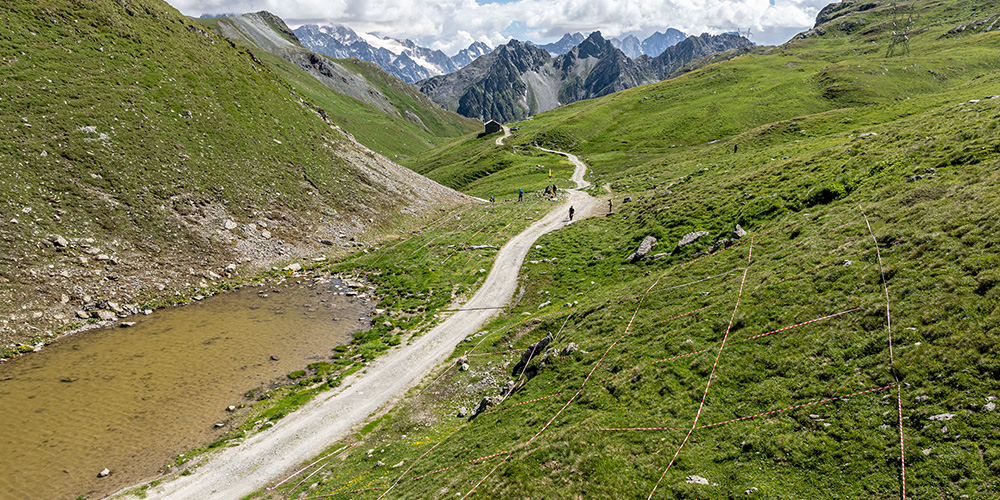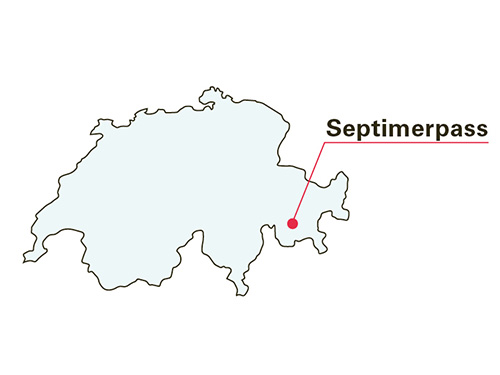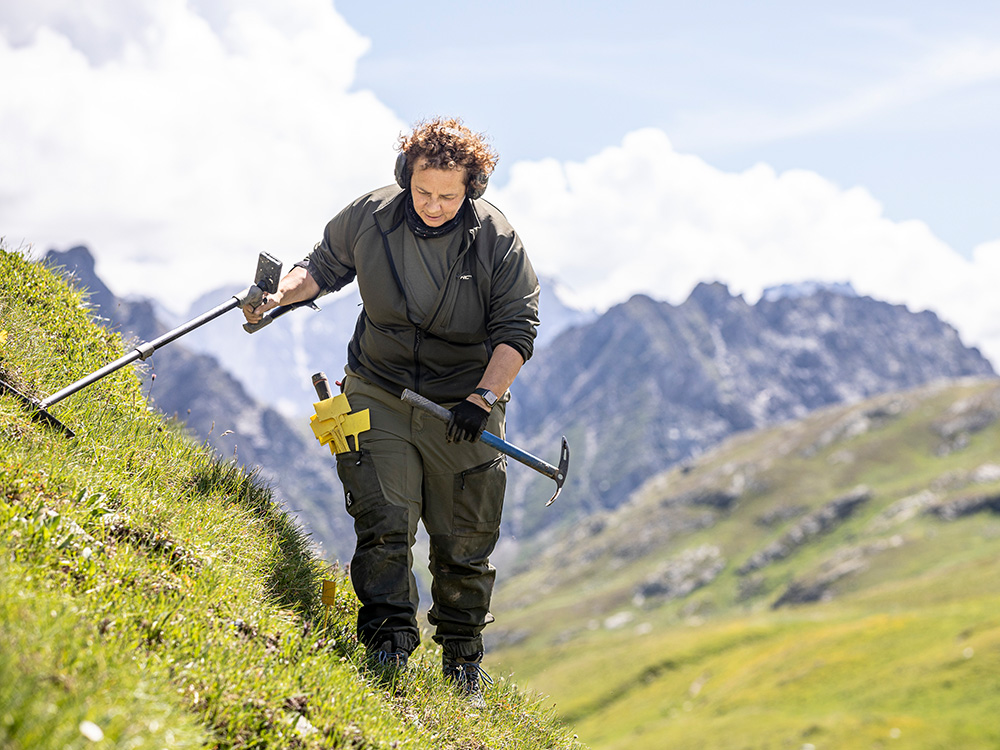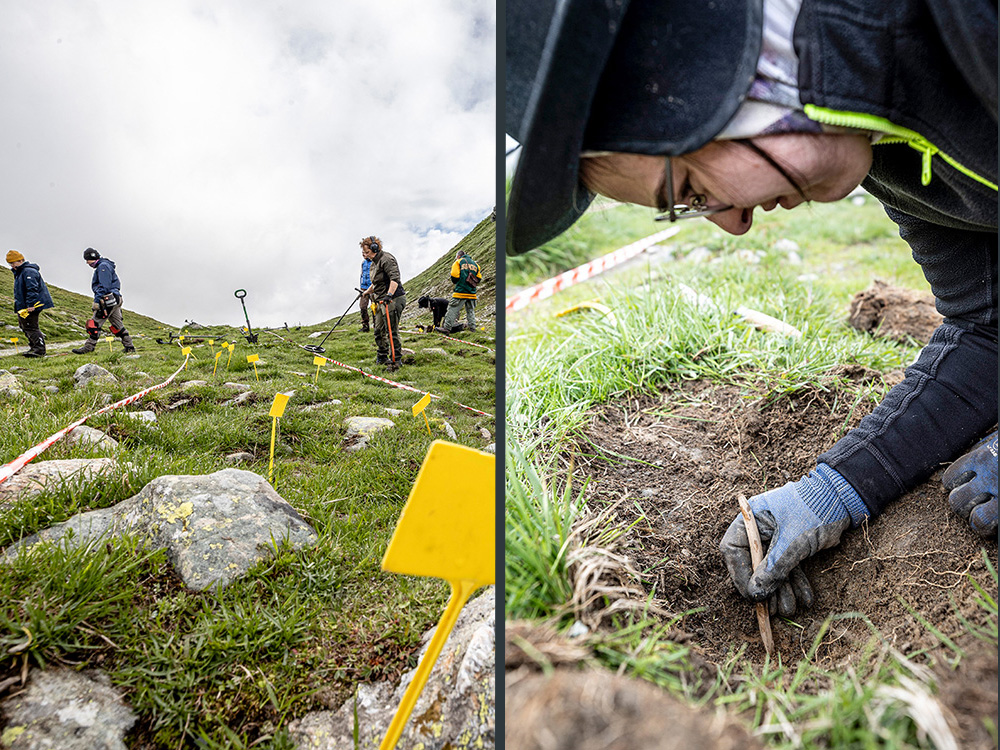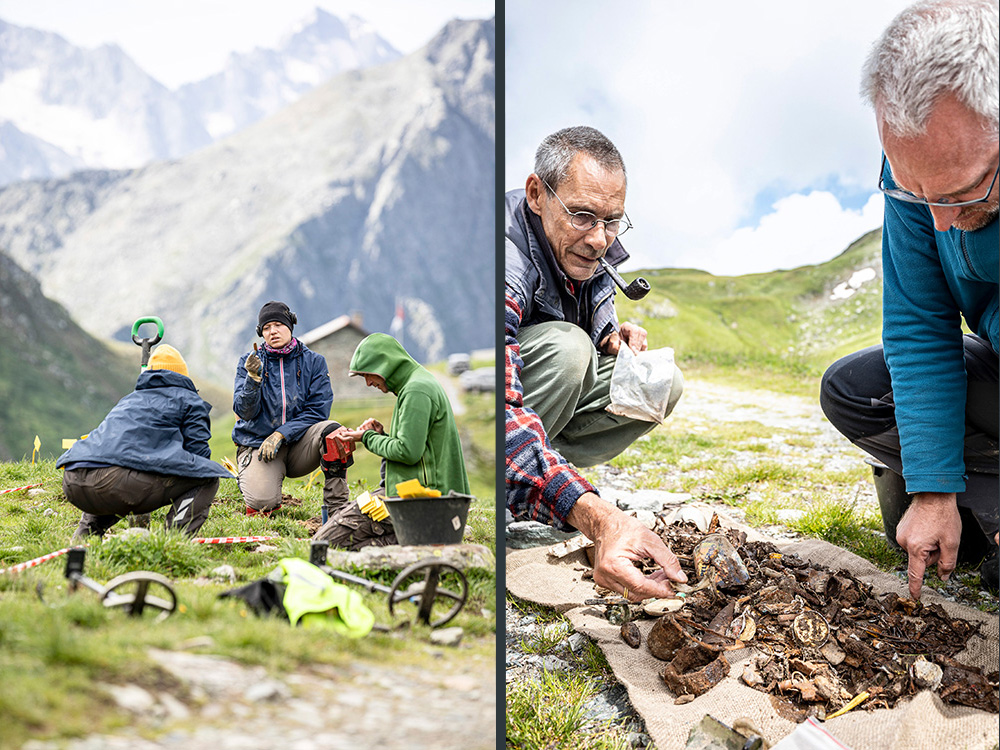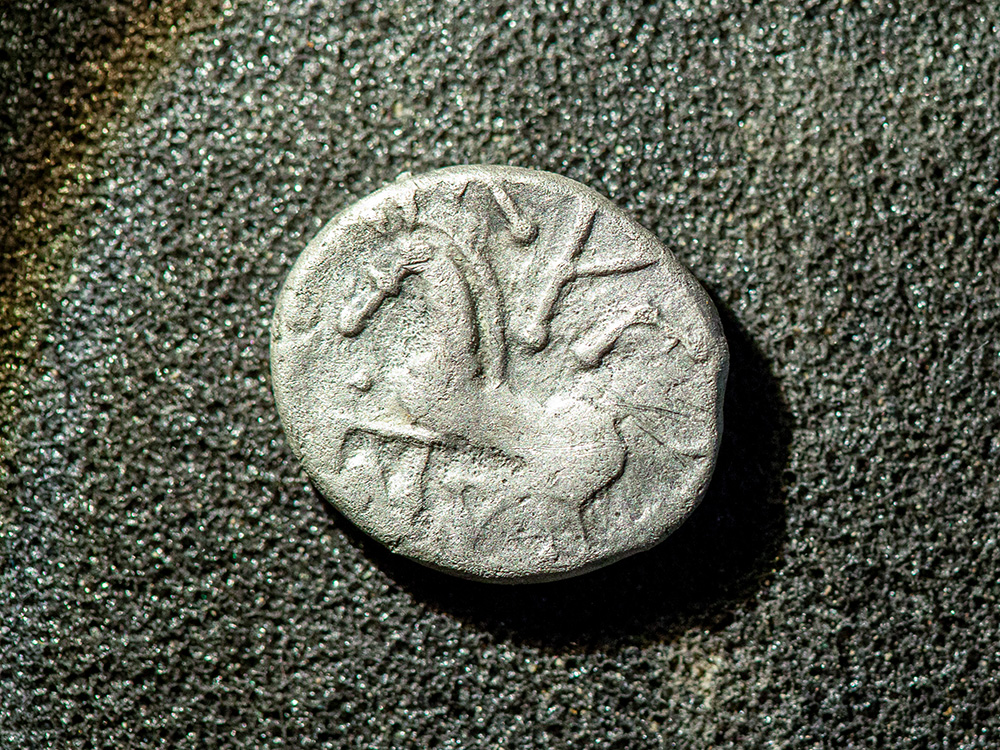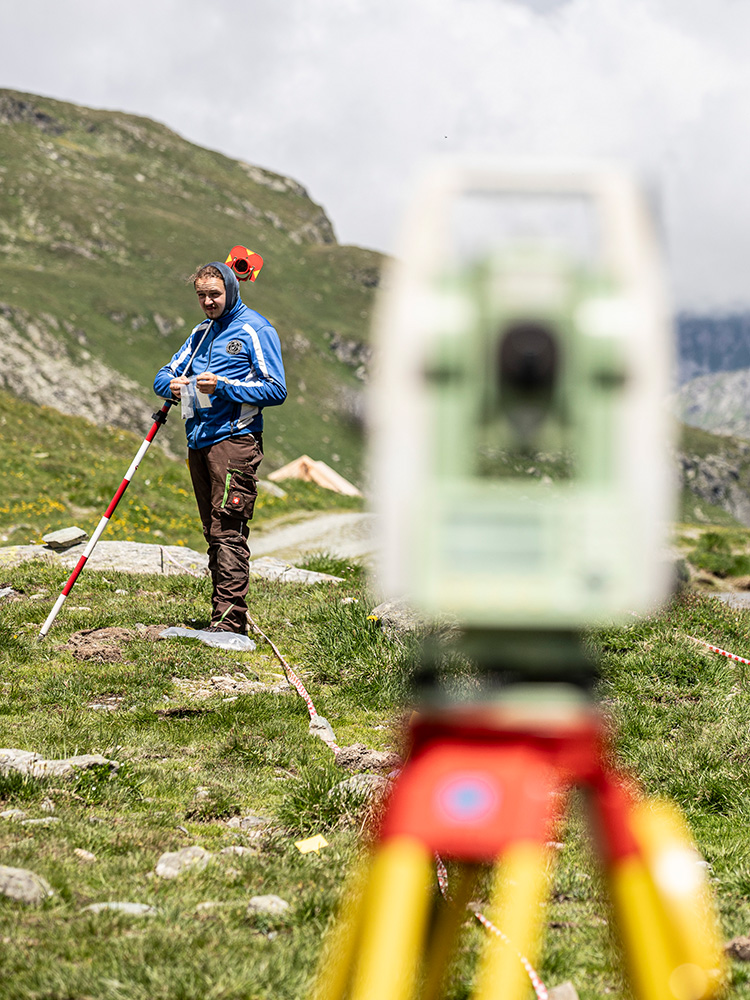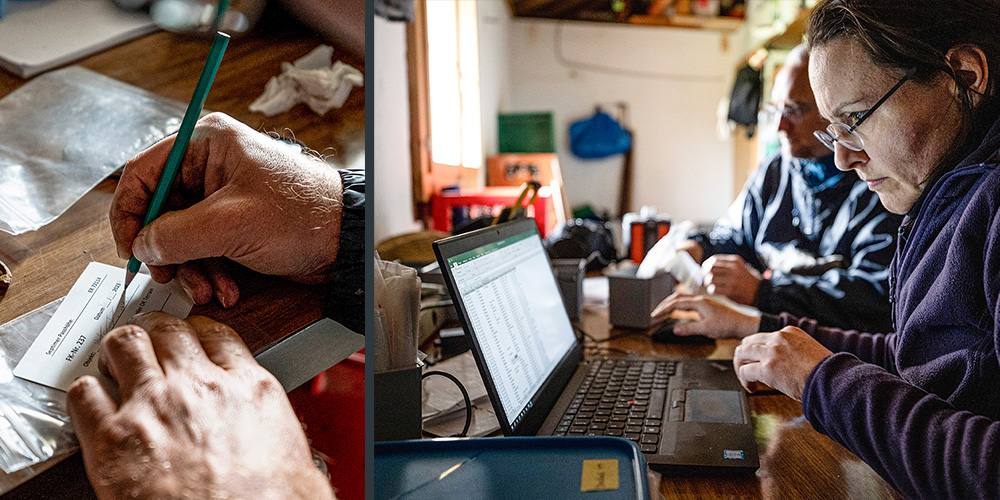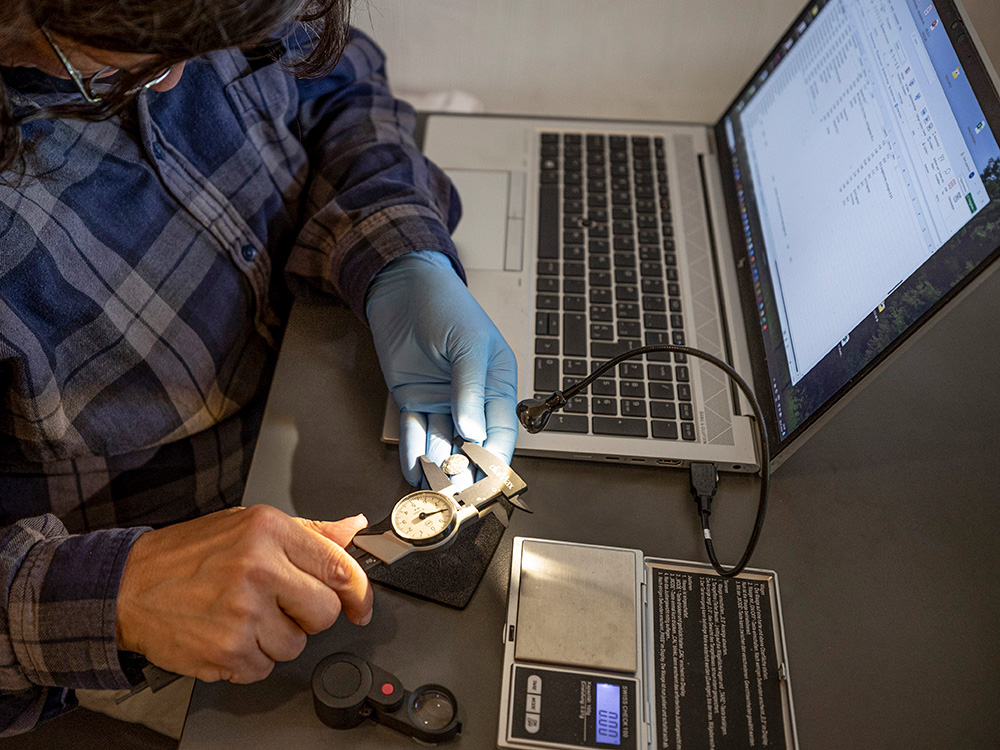Coins for the gods.
Text: Noëmi Kern
The Septimer Pass in the canton of Graubünden has long been an important Alpine crossing. Archaeological artifacts such as coins bear witness to this.
The Septimer Pass provides a direct and comparatively simple route over the mountains. The first human traces at the pass date back at least as far as the Bronze Age to around 1000 BCE.
Judging from the vast number of Celtic coins, it became a major crossover by the mid-second century BCE at the latest. Between around 15 BCE and 20 CE, troops of Roman Emperor Augustus camped here.
The Septimer Pass lies 2,310 meters above sea level. In July 2024, Peter-A. Schwarz and Hannes Flück, together with a team of volunteer metal detectorists and a group of students from the Vindonissa Professorship for the Archaeology of the Roman Provinces at the University of Basel, spent two weeks searching for archaeological artifacts.
They used construction tape to divide the area into parcels, which they then searched systematically. The team discovered numerous Celtic and Roman coins.
Bea Koens searches the area, equipped with a metal detector and garden markers. She is one of the volunteers helping the excavation team. Her work is a key part of archaeological investigations.
The markers indicate places where the devices detected metal buried under the ground. The excavation team then uses a spade to cut out a patch of grass.
Archaeology student Lara Lenz (right image) unearths a coin. To do this, she wields a wooden modelling tool normally used in pottery. Metal is less likely to be damaged by wood than by other materials.
Left image: Another piece of trash? Maria Hug (center) is not terribly enthusiastic about her find.
Right image: The excavation team unearths kilograms of modern waste — from food tins to military scrap, such as cartridge casings. Excavation team leaders Peter-A. Schwarz (left) and Hannes Flück inspect the dig.
These Celtic silver coins were minted between around 140 and 70 BCE. The reverse of the coin depicts a horse. This coin type is fairly common in Switzerland. There have been hundreds of finds in hoards and settlements, and many individual finds. Yet the coins found on the Septimer Pass weren’t simply lost by travelers. They are what is known as “iactatio” — literally, the throwing of a coin. These are offerings to the gods to thank them for a successful journey and to request continued mercy on the road ahead.
Using tachymeters (foreground) and prisms, the researchers determine the exact coordinates of an artifact (depicted here: student Carl A. Schlettwein).
The coordinates are then recorded on notecards. This serves as the “address” of an artifact and allows the exact site to be uniquely identified later.
Natalie Vogt (right image) records the coordinates and the initial description of the artifact in the database of the Archaeological Service of Grisons (Archäologischer Dienst Graubünden). Each piece is then placed in a plastic bag. The restoration, precise identification and complete documentation takes place later at the Archaeological Service of Grisons.
Coin specialist Rahel Ackermann inspects the artifacts and makes a rough initial identification. She documents the diameter and weight of the coins. The sidelight helps her identify the relief. She wears latex gloves to avoid damaging the object with her sweat. Finger perspiration can damage the surface of these coins when they are touched directly. The gloves protect her as well: The soil from which the artifacts were removed may be contaminated.
Peter-Andrew Schwarz is Professor of Provincial Roman Archaeology and holder of the Vindonissa Professorship. One current focus of his research is the Alpine campaign of Emperor Augustus. Since 2021, the CVMBAT research project has investigated and documented the early Roman conflict landscape in Oberhalbstein.
Hannes Flück is a lecturer in the Department of Ancient Civilizations. Flück, an archaeologist, is a project manager in the CVMBAT research project working on behalf of the Archaeological Service of Grisons.
More articles in this issue of UNI NOVA (May 2025).

